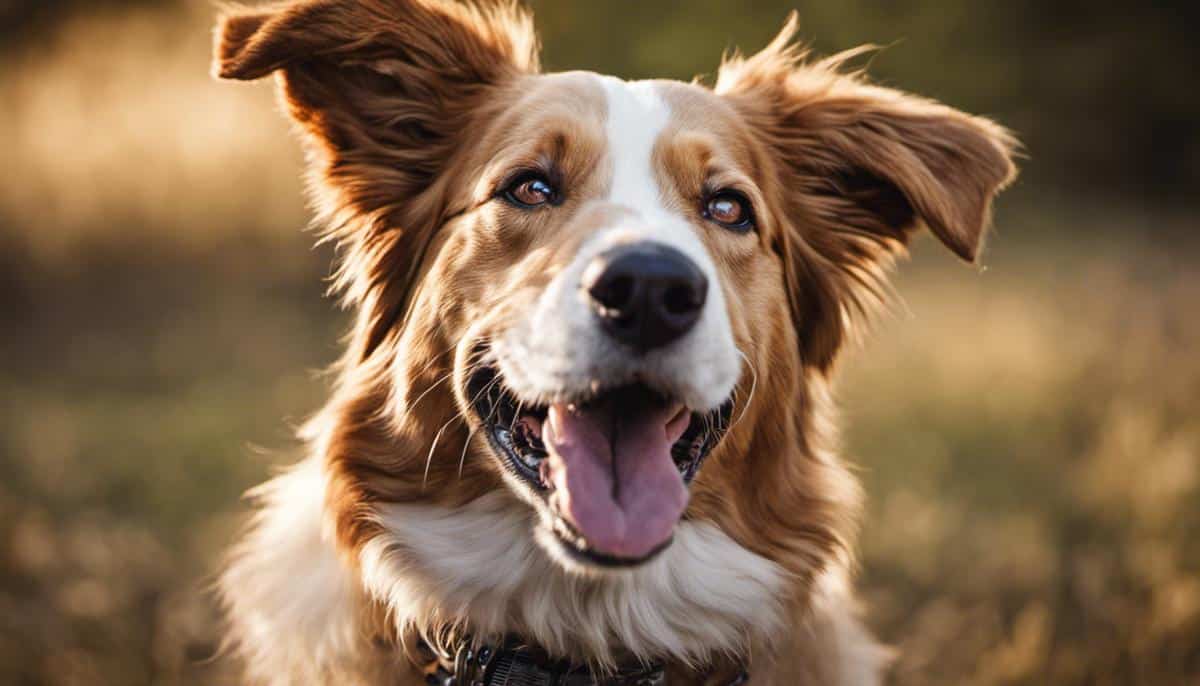
Taking a stroll to the park can be a great adventure for dogs and their owners. Seeing all the dogs playing together is certain to get their attention.
Dog parks offer a unique space for your fur babies to run free, socialize, and burn off energy.
It’s important to know that dog parks provide not only a fun environment but also a place for your pet to practice social skills and ensure mental stimulation.

While these parks are beneficial, there are certain etiquettes and responsibilities owners should be aware of before visiting.
Bringing your dog to the park means being ready to engage in safe and respectful interactions.
Simple preparations can help ensure that both dogs and their owners have a stress-free experience.
Understanding dog park rules and practicing good manners in these areas can enhance the visit for everyone involved.
With proper training and awareness, a trip to the dog park can be a positive experience for all, encouraging healthy interactions among dogs.
Key Takeaways
- Dog parks offer socialization and exercise for dogs.
- Owners should be aware of and follow park rules.
- Proper training ensures a safe park experience.
The Importance of Dog Parks
Dog parks are vibrant spaces that offer more than just a place for dogs to roam.
They contribute to better socialization and a healthier lifestyle for both dogs and their owners.
With spaces that encourage playful interactions, dog parks support mental well-being and promote daily physical activity.
Benefits of Socialization
Dog parks are essential for developing dogs’ social skills.
Interacting with other dogs helps them learn proper behavior and communication.
Dogs gain confidence by playing with various breeds and sizes, which can ease behavior issues at home.
These interactions are crucial for building a dog’s self-esteem and mental health.
Meeting other pet owners at dog parks can also benefit humans.
Sharing stories and tips fosters a sense of community among dog lovers.
Learning about local dog-friendly events is an added perk, encouraging more social outings with pets.
These spots help in preventing isolation for both humans and pets, making them a vital part of community life.
Exercise and Health
Exercise is vital for every dog’s health, and dog parks offer the perfect setting for physical activity.
Running, jumping, and playing fetch help dogs burn off energy and maintain a healthy weight.
Regular trips to the park can improve a dog’s cardiovascular health, reducing risks of obesity-related issues.
Dog parks also promote heart health in humans.
Owners benefit from walking or jogging around with their pets, contributing to their own physical fitness.
Moreover, the outdoor setting can provide exposure to sunlight, which is good for vitamin D synthesis.
Regular movement keeps both dogs and owners in better shape, improving overall well-being.
Preparing Your Puppy for the Park
When getting a puppy ready for the dog park, it’s important to focus on their health and social skills.
Ensuring your puppy is vaccinated and able to mingle with other dogs in the dog park is key to a safe and fun experience.
Vaccinations and Health
Before taking a puppy to the park, making sure they have all necessary vaccinations is crucial.
Puppies should be immunized against diseases like rabies, parvo, and distemper.
It’s also wise to protect them from bordetella and leptospirosis, which are common in areas with lots of dogs.
A visit to the vet can confirm if the puppy’s immune system is strong enough for park visits.
Regular check-ups also ensure your puppy is healthy and ready for playtime.
The vet might suggest a health plan including deworming and flea prevention, which can protect them from parasites.
Starting these routines can make dog park visits safe and enjoyable.
Puppy Socialization Tips
Socialization is key for puppies to feel comfortable around other dogs and people.
Begin by exposing your puppy to different environments, sights, and sounds early on.
Training classes can be helpful in teaching basic commands and enhancing social skills.
Playdates with vaccinated dogs are a good step before visiting a park.
Rewarding positive behaviors with treats and praise helps reinforce good interactions.
Observing your puppy’s body language is important in identifying any signs of stress or fear.
Gradually increasing exposure to different social situations will help build confidence and better prepare them for the dog park.
Dog Play and Interaction

Dogs have unique ways of playing and interacting, which can build social skills and provide physical exercise.
Watching their body language can help identify when they are enjoying themselves and when things might go wrong.
Understanding Dog Behavior
Understanding how dogs play and communicate is crucial.
Dogs often use body language to signal their intentions.
A wagging tail, play bows, and relaxed posture usually mean a dog is open to play.
These signs show the dog is a socialized dog and comfortable around others.
Sometimes, a dog might growl or snap—not always a sign of aggression, but an indication he’s setting boundaries.
Recognizing these signs helps owners step in before behaviors escalate.
If a dog suddenly freezes, stares, or raises its hackles, this could be a sign of discomfort or fear.
Play between dogs should be balanced and fun for all involved.
Switching roles during play, like taking turns being chased, is a good indicator of healthy interaction.
Understanding these cues helps owners encourage positive interactions and intervene when necessary.
Preventing Conflicts
Conflicts can arise in any play situation.
One way to reduce risks is to ensure dogs are well-socialized.
Bringing a socialized dog to the park helps prevent misunderstandings.
Watching for signs of stress or aggression can prevent conflicts before they start.
Aggressive dogs may display stiff body language or aggressive barking.
Resource guarding is another potential issue; dogs may become possessive over toys or spaces.
It’s best to avoid bringing toys to communal areas or closely supervising if you do.
Owners should feel empowered to remove their dogs from uncomfortable situations.
By doing so, they maintain a safe and enjoyable environment for everyone at the park.
Training and Obedience

Training a dog for the dog park involves teaching basic commands and ensuring they can follow instructions even with distractions around.
Proper supervision and preparation can help dogs enjoy their time while keeping them safe.
Basic Commands
Teaching your dog basic obedience is essential before visiting a dog park.
Commands like “sit,” “stay,” “come,” and “leave it” can prevent unwanted behaviors.
These are crucial for controlling your dog in situations with many distractions.
Practicing these at home or in less busy environments helps reinforce them.
By following these commands consistently, a dog can have more freedom to explore safely.
This not only keeps the park experience pleasant but also builds a stronger bond between the dog and their owner.
Training for the Park
Dogs should be exposed to park-like settings gradually to ensure they don’t get overwhelmed.
Training them in areas with increasing levels of distractions helps in this process.
Starting with quiet spaces and slowly moving to busier environments builds their confidence.
Regular practice ensures they remember their training and stay focused.
Dog owners should also make sure to properly supervise their dog during training sessions.
Offering plenty of praise and treats for good behavior keeps them motivated and engaged.
This makes the dog park a fun and positive experience for both dogs and their owners.
Dog Park Etiquette and Rules

Being responsible at the dog park ensures a fun and safe environment for all dogs and their owners. Key etiquette includes understanding leash and off-leash areas and the importance of cleaning up after your dog.
Leash and Off-Leash Areas
Dog parks may have specific areas where dogs can be off-leash, while others require leashes.
It’s important for owners to know and follow these rules to prevent accidents. Many parks have signs indicating if the area is off-leash.
Making sure a dog responds to commands is crucial in off-leash zones.
This ensures that the dog comes when called and behaves properly around other dogs.
Off-leash areas allow dogs to run freely, play, and get exercise.
However, it’s important to assess your dog’s temperament. Not all dogs are suited for off-leash play.
Following these guidelines ensures a positive experience, keeping both dogs and owners happy and safe.
Cleaning Up
One of the most important aspects of dog park etiquette is cleaning up after your dog.
Owners should always carry poop bags and use them promptly.
Leaving waste behind is unsightly and can pose health risks to other dogs and people.
It’s a simple but crucial rule that helps keep the park clean and enjoyable.
Some parks provide dispensers with bags near entrances, but it’s a good idea for owners to bring their own.
Being proactive about cleaning helps maintain the health and atmosphere of the park.
Health and Safety Measures

Ensuring the well-being of dogs at the park involves both preventing disease transmission and managing reproductive health. These steps protect not only the individual dog but also the other dogs and people sharing the park space.
Preventing Disease Transmission
When dogs gather in a park, they may share more than just playtime.
Vaccinations are key in keeping dogs safe.
Dogs should be up to date on rabies, distemper, and bordetella vaccines before entering the park. This helps prevent the spread of infectious diseases.
It’s also smart to bring fresh water and a collapsible bowl to keep your dog hydrated and reduce the risk of picking up bacteria from shared bowls.
Waste bags are essential for cleaning up after your dog to maintain a hygienic environment.
Owners can encourage calm behavior upon entering the park to prevent stress and fights, which can lead to injuries.
Dog in Heat and Neutering
Managing dogs in heat or those who aren’t spayed or neutered is crucial in a public park setting.
A female dog in heat should avoid the park to prevent unwanted attention from male dogs and the potential for accidental breeding. This can lead to stressful situations and altercations.
Neutering male dogs can reduce aggressive tendencies and prevent them from roaming.
Spaying females helps control the population and can reduce health risks.
Many local ordinances require proof of a spay or neuter procedure.
By taking these steps, owners ensure a safer and more enjoyable experience for everyone involved.
Enhancing the Dog Park Experience
Making trips to the dog park more enjoyable involves adding amenities that cater to exercise and play. Key features include agility equipment and the option for visitors to bring their dog toys and accessories.
Agility and Exercise Equipment
Agility equipment in an off-leash park adds excitement and physical challenges for dogs.
Items like tunnels, ramps, and hoops offer varied exercise opportunities. These elements help keep dogs engaged and fit.
Well-designed exercise gear not only builds their muscles but also sharpens mental skills.
With different levels of difficulty, dogs of any age or size find suitable activities. Durable materials are important for safety and longevity.
Engaging with agility equipment helps strengthen the bond between pet owners and their dogs.
When dogs are active and stimulated, they are happier and healthier, making the park enjoyable for everyone.
Bringing Toys and Accessories
Bringing dog toys to the park can significantly enhance playtime.
Items like frisbees, balls, and ropes are easy to carry and add fun to the visit. These toys encourage social interaction among dogs, which is great for their development.
Toys can help timid dogs feel more confident by offering a sense of security through familiar objects.
They also stimulate fetching games, which are excellent for exercise. It’s beneficial to have a variety of toys to keep playtime exciting.
Accessories such as collapsible water bowls and treat pouches make park visits more convenient.
Ensuring dogs stay hydrated and rewarded for good behavior improves their overall park experience. These small additions make trips to the dog park more pleasant for both dogs and their owners.
Frequently Asked Questions
Dog parks can be great places for dogs to play, but there are important things to consider.
These include advice from vets, potential dangers, and tips for handling situations. Exploring alternatives and understanding the benefits and drawbacks can help in making the right decision.
Why do some vets advise against putting dogs in dog parks?
Some vets suggest caution because not all dogs are suitable for dog parks.
Dogs that are not well-socialized might become anxious or aggressive. Additionally, there is a risk of spreading diseases if dogs are not properly vaccinated.
What are the potential dangers of dog parks to be aware of?
Dog parks can have risks like fights between dogs, spreading of illnesses, and injuries from rough play.
Owners should watch their dogs closely and ensure the environment is safe. Keeping an eye out for aggressive dogs is also important.
What are some alternative activities to dog parks for exercising my dog?
Walking, hiking, and playing fetch at home are great alternatives.
Other activities include agility training or swimming, which provide exercise in a controlled setting. These options can keep dogs active without the unpredictability of a dog park.
What are the advantages and disadvantages of dog parks for canine socialization?
Dog parks offer socialization with other dogs, which can improve a dog’s behavior and confidence.
However, they can also bring negative experiences if interactions turn aggressive. Owners need to be mindful and intervene if necessary to prevent any harm.
How should you handle a situation when your dog is barking at other dogs at the park?
If your dog is barking a lot, it’s good to stay calm and try to distract them.
Calling them away and engaging in a game or giving a command can help redirect their focus. Consistent training visits can also reduce barking behavior over time.
What are the best practices for managing puppies and leashes at a dog park?
For puppies, it’s important to ensure they are socialized and have completed vaccinations before visiting a dog park.
Using a leash initially can help control their interactions until they are comfortable.
Always supervise their play to ensure safety.




